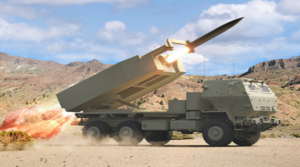 Laser radar data system is latest innovation in company’s near century-long history
Laser radar data system is latest innovation in company’s near century-long history
WASHINGTON, DC — The U.S. government has granted the 10 millionth patent in the nation’s history to Raytheon (NYSE: RTN). The patent covers a system for obtaining real-time readings on speed and distance from the data stream created by laser radars. The system was invented by Joe Marron, Ph.D., an optical engineer at Raytheon.
Raytheon’s story of innovation stretches back to the company’s founding in 1922. Its first successful invention was a vacuum tube that made it practical to run home radio sets from a wall socket rather than big, messy batteries. The laser was invented over fifty years ago by a Raytheon engineer.
The company currently holds 13,000 active patents – nearly 4,500 of which are in the U.S. – and has more than 4,300 patent applications pending.
Those numbers tell a story, Raytheon Chairman and CEO Thomas A. Kennedy said.
“Raytheon engineers and researchers like Joe have been pushing the bounds of what’s possible for generations. It’s what we do. We innovate, we solve hard problems, and we create solutions that explore new frontiers to shape an exciting future,” said Kennedy, an electrical engineer with a Ph.D. and holder of four U.S. patents.
Raytheon, Marron applied for the patent in 2015, little realizing he would become the inventor behind U.S. Patent 10,000,000.
“It’s equivalent to a guy who buys a lottery ticket every month,” Marron said of his noteworthy new patent number. “Eventually, it hits.”
Marron was a good candidate for landing on the numerically significant patent. He has turned his ideas into more than 20 patents over the years, starting with a 1991 concept to improve upon bifocal lenses.
His invention improves the ability of laser radars, which use reflected light to measure speed and distance, to identify and track objects.
One problem with large laser sensors is that light fluctuates very quickly, creating an enormous amount of data to process. That means large laser radar arrays rely on a series of converters and processors just to create a coherent picture of what they’re seeing.
To get that information faster and with high fidelity, Marron called upon his knowledge of two familiar technologies: digital cameras and FM radio.
By redesigning a laser radar like a digital camera, he could spread that data out across many pixels, each with its own processing electronics. Then, using an approach called quadrature detection, which underlies many forms of wireless communications, those pixels would report only the bits of data the sensor would need to draw a picture; in essence, it’s a form of data compression.
“We can take terabytes of information and translate it down into something that can be digested by a computer,” he said.
The potential applications are many, he said, including autonomous cars; a laser radar that can identify objects with speed and clarity could help a car’s artificial intelligence make better decisions.
And that would be another entry in Raytheon’s history of innovation; along with Smith’s revolutionary S-tube, the company’s famous breakthroughs include Percy Spencer’s 1943 patent application for mass-producing magnetrons, which helped meet a critical supply need for radars in World War II. The following year, Spencer struck again, this time with a way to use the magnetron to cook, resulting in the first commercial microwave ovens.
Raytheon’s more recent patents cover many areas of emerging technology, such as a method for detecting malicious code in a computer system and a sensor that can detect a single, low-energy light particle, which could pave the way for quantum communications.


